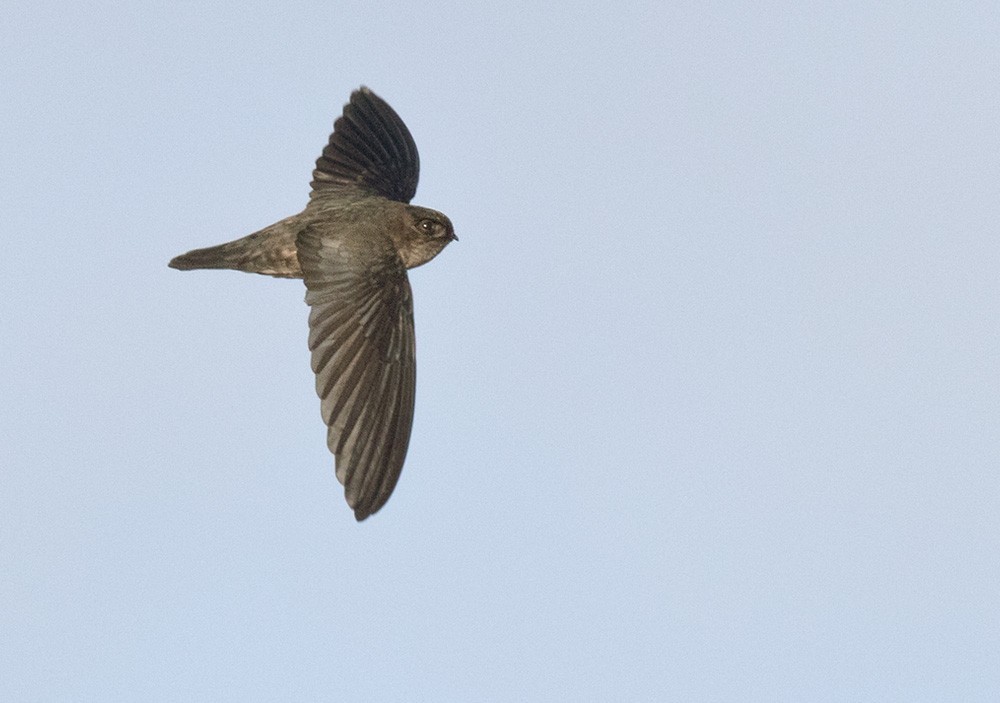Uniform Swiftlet
A species of Echolocating Swiftlets Scientific name : Aerodramus vanikorensis Genus : Echolocating Swiftlets
Uniform Swiftlet, A species of Echolocating Swiftlets
Botanical name: Aerodramus vanikorensis
Genus: Echolocating Swiftlets
Content
Description General Info
 Photo By Lars Petersson
Photo By Lars Petersson Description
The uniform swiftlet is a gregarious, medium-sized swiftlet with a shallowly forked tail. It is about 13 cm long with a wingspan averaging around 27 cm. It weighs about 11 grams. The colouring is dark grey-brown, darker on the upperparts with paler underparts, especially on chin and throat. It is similar to, and most likely to be confused with, the white-rumped swiftlet or mountain swiftlet. 
Size
13 cm
Nest Placement
Cavity
Feeding Habits
Uniform Swiftlet predominantly consume flying insects, with a notable preference for ants. They exhibit aerial foraging techniques to capture prey mid-flight, showcasing unique adaptations for insectivorous feeding.
Habitat
The uniform Swiftlet thrives in tropical and subtropical zones, favoring lowland forest landscapes, coastal areas, and islands up to elevations of 1600 meters. They are adaptable, making homes in natural caves—often in limestone—and sometimes in human-made structures. Their distribution shows a preference for forested and edge ecosystems, with forays over open terrains like gardens.
Dite type
Insectivorous
General Info
Feeding Habits
Bird food type
Distribution Area
This species is widespread from the Philippines through Wallacea, New Guinea and Melanesia. It has been recorded as a rare vagrant to Australia, from Cape York Peninsula and islands in Torres Strait. 
Species Status
The uniform swiftlet has a very large range and that they are locally common and in some places abundant within that range. The population has not been quantified but is believed to be stable. The birds face no particular threats, and as a result, the IUCN has listed it as being of "Least Concern". 

 Photo By Lars Petersson
Photo By Lars Petersson Scientific Classification
Phylum
Chordates Class
Birds Order
Swifts and hummingbirds Family
Swifts Genus
Echolocating Swiftlets Species
Uniform Swiftlet